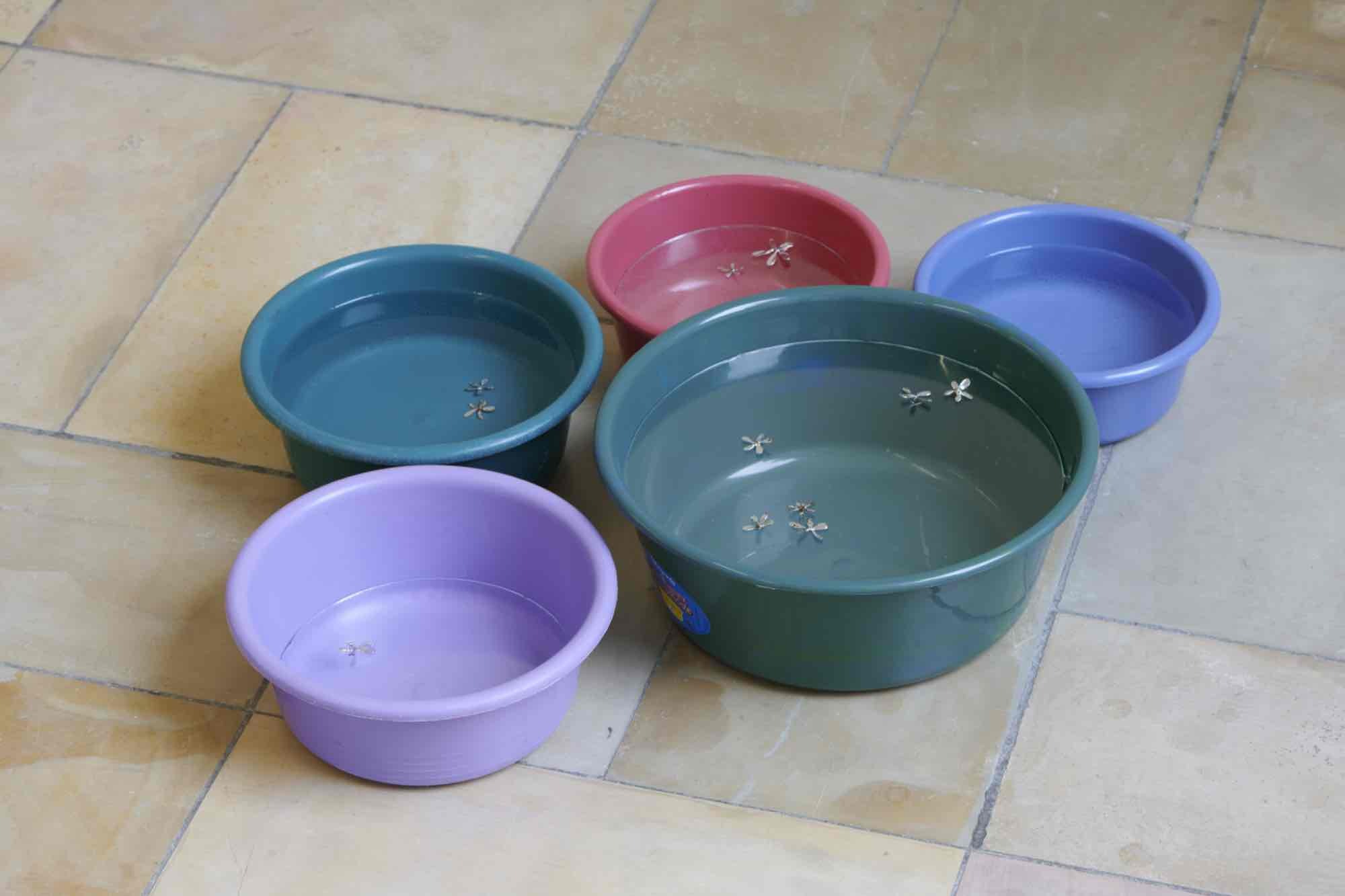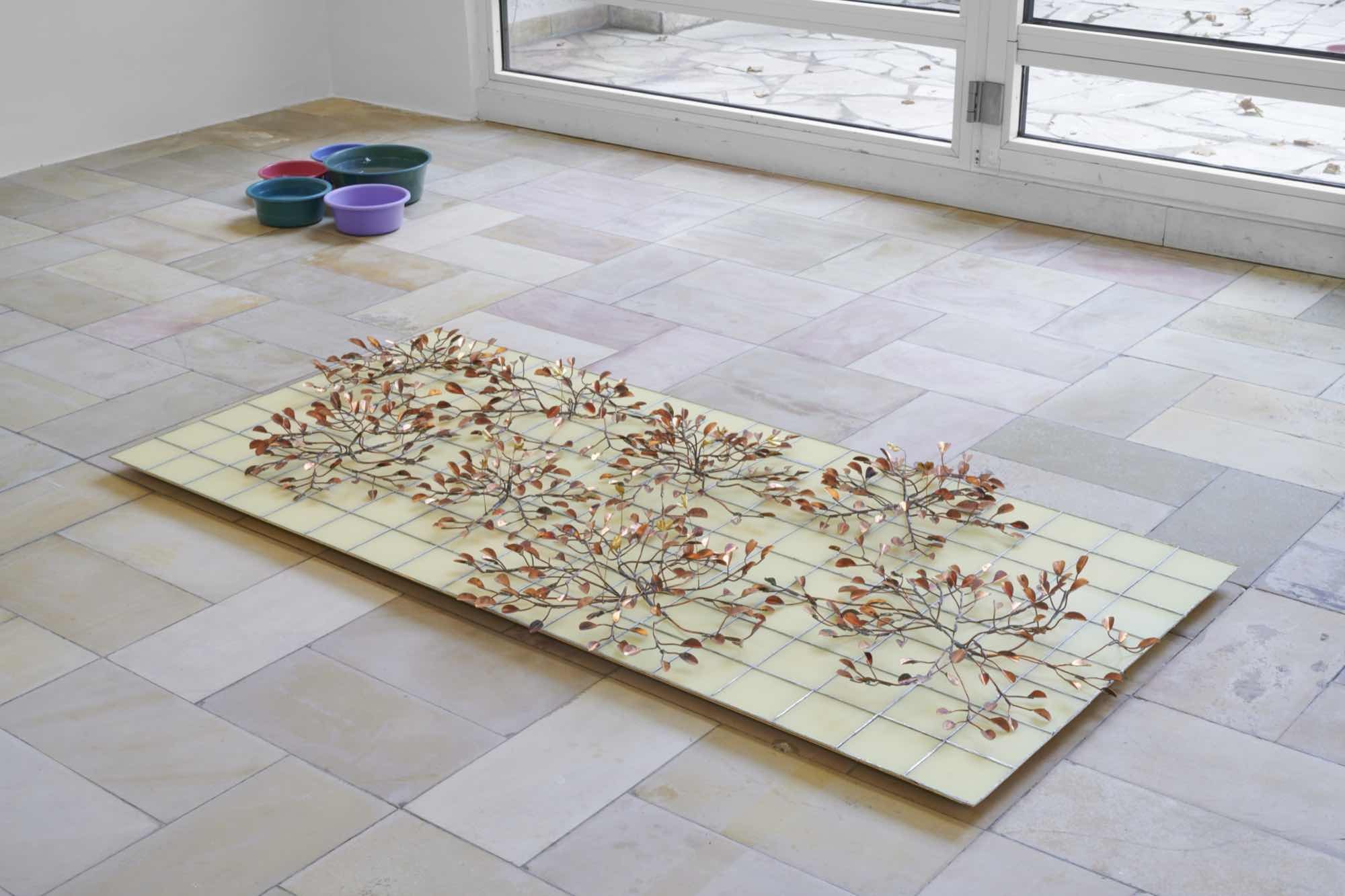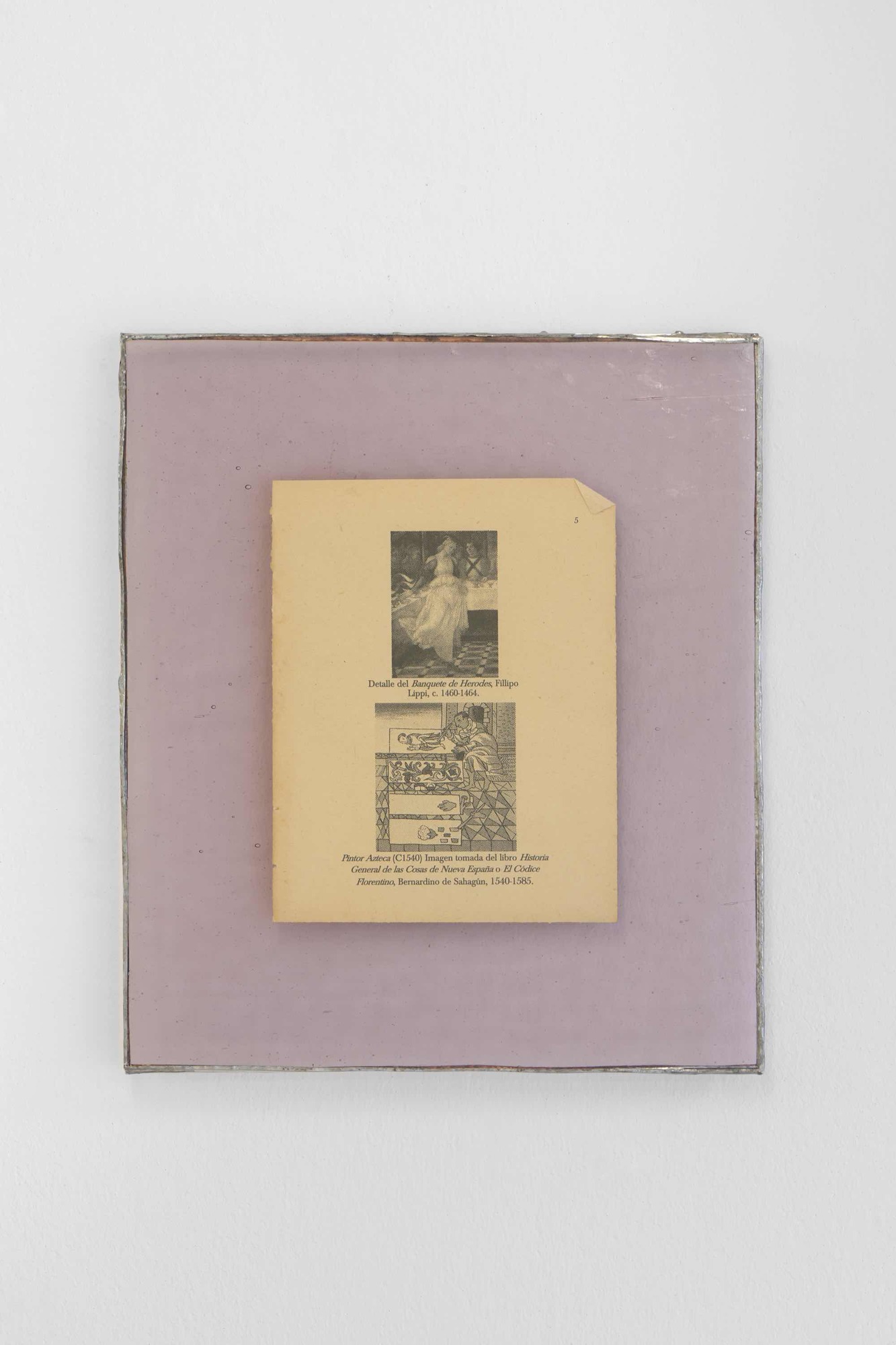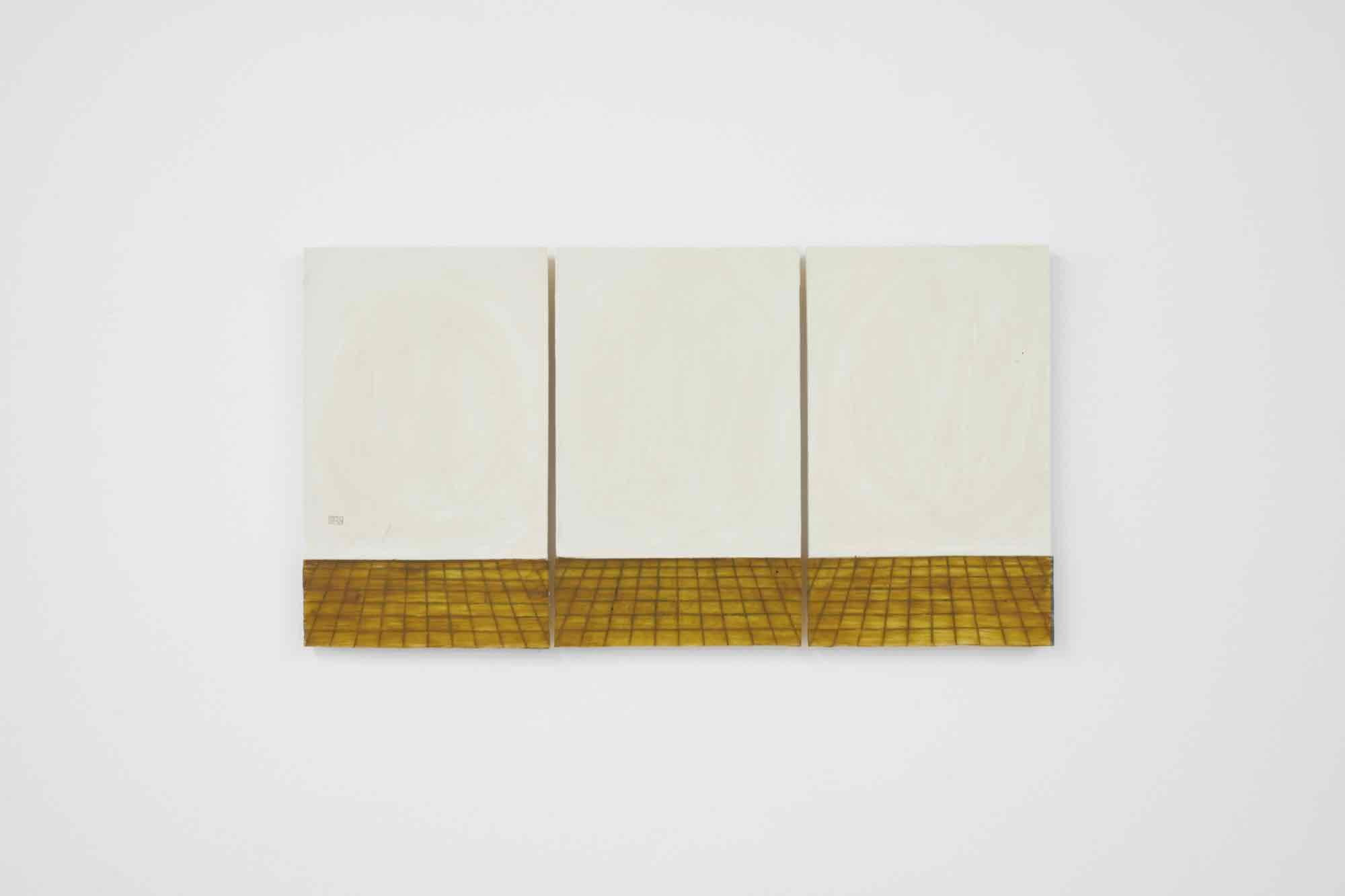José Montealegre
Nervous System
20 Aug - 16 Oct 2022

José Montealegre: Tainting the well, 2022. Installation view Kölnischer Kunstverein, 2022. Courtesy: the artist and Mountains, Berlin. Photo: Mareike Tocha.

José Montealegre: Página 352, 2022 (detail). Installation view Kölnischer Kunstverein, 2022. Courtesy: the artist and Mountains, Berlin. Photo: Mareike Tocha.

José Montealegre: Nervous System, 2022. Installation view Kölnischer Kunstverein, 2022. Courtesy: the artist and Mountains, Berlin. Photo: Mareike Tocha.

José Montealegre: Página 424 fg. 3, 2022. Installation view Kölnischer Kunstverein, 2022. Courtesy: the artist and Mountains, Berlin. Photo: Mareike Tocha.

José Montealegre: Art History, 2018. Installation view Kölnischer Kunstverein, 2022. Courtesy: the artist and Mountains, Berlin. Photo: Mareike Tocha.

José Montealegre: Página [missing], 2022. Installation view Kölnischer Kunstverein, 2022. Courtesy: the artist and Mountains, Berlin. Photo: Mareike Tocha.

José Montealegre: Página [missing], 2022 (detail). Installation view Kölnischer Kunstverein, 2022. Courtesy: the artist and Mountains, Berlin. Photo: Mareike Tocha.

José Montealegre: Nervous System, 2022. Installation view Kölnischer Kunstverein, 2022. Courtesy: the artist and Mountains, Berlin. Photo: Mareike Tocha.

José Montealegre: Afterflood (Triptych), 2021. Installation view Kölnischer Kunstverein, 2022. Courtesy: the artist and Mountains, Berlin. Photo: Mareike Tocha.

José Montealegre: Página [missing], 2022. Installation view Kölnischer Kunstverein, 2022. Courtesy: the artist and Mountains, Berlin. Photo: Mareike Tocha.
In his first institutional solo exhibition Nervous System at the Kölnischer Kunstverein, José Montealegre continues his ongoing series of works from 2020 titled Páginas. The starting point for these sculptures is an extensive botanical archive of plant illustrations created in the course of the Spanish colonization of Mexico and published as Nova Plantarum Animalium et Mineralium Mexicanorum (1628). The archive saw the catalogization and re-systematization of hundreds of indigenous plants by the colonizers. In rich detail, Montealegre translates these botanical illustrations into copper sculptures and presents them on the second floor of the Kunstverein. In his artistic practice, which also includes writing, the artist tells stories that blur the line between origin and (mis)translation. Contrary to knowledge shaped by colonial powers, Montealegre allows marginalized perspectives to emerge thus challenging canonical history(ies).
The exhibition will be followed by the first publication of José Montealegre.
Methodologies I
One. Like a protagonist in a cartoon drawing entering the revolving snout of a concrete goosebump city like, for example, New York, my brass-buckled leather briefcase snaps unshut and all my papers fly away. Now I’m late. Now I’m poor. Now I have dreams. Now they fly away.
Two. It is awfully obvious that any conversation about the methodologies of art begins and surely ends with life. Begins because it is the spring which taps the well. Ends because bloated goldfish are prey for hawks.
Three. Document whirlwind. Papercut city. The nerve, the nerves, nervous nerve of steel. The page tornado scatters order and logic, thus rendering the business pitch to be delivered into an unintelligible levitation where bureaucracy has no grasp and the tendril tether fails to anchor root. A misfiring neuron is perhaps what you have.
Four. Upon which I realize that what is sought cannot be accidental. The person who fails to hem the hole in their pocket is called a benefactor.
Five. It is the spinning paper cyclone that so destroyed my life, the site of the worlds autolysis. Where the invisible is not only seen but transforms. The papers levitated are crumpled into orbs. They hold, hide, and corrupt information. It is to look down into the well and see the golden meniscus that refracts the light, it is the cast and wilting blossom that falls gently on the surface of the water and is blown about by the wind, it is the goldfish that swims clumsily if not in grace and the talon that breaks its peace and plunges into the water and takes that goldfish into another ecstatic world.
Six. In May 2020 I downloaded a digital copy of the Nova Plantarum Animalium et Mineralium Mexicanorum (1628) from Biodiversitylibrary.org to a thumb drive. Then I took that thumb drive to a student printer. There I printed it in black and white on recycled paper. Leather bound front cover and all. The 1,104-page stack of documents has hundreds of drawings of plants and animals found in present day Mexico and Central America. Each drawing is accompanied by a Nahuatl name that has been scattered by the empires and a Latin name that has been reinterpreted by modern botany. Since printing this version of the ‘Nova Plantarum’ I have been going through the book almost every day. I look at the plants and sometimes, recognize them instantly. Other times it takes me months to realize that I have seen them in the past, but most remain unknown to me. When I google their name, nothing comes up. Familiar only through these drawings, I see faint possibilities in the landscape. When I feel like it and when I start to realize that I know them sculpturally, I make a sculpture of the drawing. So far, I have made around eighty plant sculptures. There are hundreds remaining. Every time I leaf through the black and white printer copy of this book I create a new order within it. The leather cover is now in the middle of the book with tons of scribbles and notations. Its order has become irrational and irrelevant. The page numbers jump by the hundreds. I have lost pages. I have crumpled them. I have stained them.
Text: José Montealegre
Methodologies II
One. Looking at
First look at the white walls, second look at the tiled floor. Looking around. Looking down. Get on your knees. Get closer. Discover. Repeat.
Two. Claiming
In 1517, during the Spanish colonization of the Americas, naturalist and physician Francisco Hernández de Toledo was sent to the first scientific and botanical expedition. The result of a seven-year expedition was an extensive botanical archive in the form of an illustrated manuscript with schematic drawings commissioned from Nahua painters. It was then stored in the Escorial Monastery, re-structured by the Italian medic Nardo Recchi, partly lost in a fire, and eventually published 100 years later under the title Nova Plantarum, Animalium, et Mineralium Mexicanorum historia in 1628.
Three. Knowing
Seeing, naming, knowing. The names of the plants in the book are both in Nahuatl and in Latin. Yet, since the references have been partially lost through appropriation, acquisition, and translation, attempts to find an equivalent in today’s botany are not always successful. As we walk through the city of Cologne, I see a strikingly dominant plant that has broken through the curb. “Didn’t you notice that paving stones in German cities are always in arches?”, he asked. Thinking through craft.
Four. Narrating
In 2013, I visited José Montealegre in his studio for the first time. He had just moved from Managua to Frankfurt am Main to start his studies at the Städelschule in the class of Willem de Rooij. I remember looking at, or rather observing, platforms of tiles on low pedestals on the floor displaying miniature jungle worlds in clay, at reliefs of tiny skeletons on the wall next to framed, seemingly historical book pages. It was with surprise when I found that those documents were fictional: digital prints on blank pages torn out of used books. Overwriting histories. Rewriting history. Reclaiming the narrative.
Five. Expanding
Montealegre’s works have the potential to extend beyond their edges. Like four rectangular cutouts of a larger environment, they seem to grow, to evolve, to reproduce. Outside, the mirroring surfaces of the plastic containers, used in Honduras to collect rainwater and hand wash clothes, reflect their surroundings. Stained-glass squares echo the influence of Catholic iconography and craft and the allconsuming European narrative. The Renaissance in Europe brought on not only the concept of
perspective in art but also colonial expansion.
Six. Collapsing
What copper and nerves have in common is that they are both electrical transmitters. “Don’t trust me, I’m not telling you the truth”, he says. Trembling and shaking. Restructuring knowledge and power. Returning agency.
Text: Miriam Bettin
Curator: Miriam Bettin
José Montealegre (*1992 in Tegucigalpa, Honduras) lives and works in Berlin. He studied philosophy and literature at the Universidad Centroamericana de Managua, Nicaragua, and with Willem de Rooij at the Städelschule in Frankfurt am Main. His work has been shown in solo exhibitions at the Klosterruine in Berlin, Mountains in Berlin (both 2021), Convent Art Space in Ghent (2019), and in group exhibitions including Lantz’scher Skulpturenpark Lohausen in Düsseldorf (2021), Städelmuseum in Frankfurt am Main, Natalia Hug in Cologne (both 2019), Futura Gallery in Prague, Gillmeier Rech in Berlin (both 2018), and Kunsthalle Darmstadt (2017, 2014). Parallel to the solo exhibition at the Kölnischer Kunstverein, a group show curated by José Montealegre and Rebekka Seubert is on view at the Dortmunder Kunstverein (until 30.10.2022).
The exhibition will be followed by the first publication of José Montealegre.
Methodologies I
One. Like a protagonist in a cartoon drawing entering the revolving snout of a concrete goosebump city like, for example, New York, my brass-buckled leather briefcase snaps unshut and all my papers fly away. Now I’m late. Now I’m poor. Now I have dreams. Now they fly away.
Two. It is awfully obvious that any conversation about the methodologies of art begins and surely ends with life. Begins because it is the spring which taps the well. Ends because bloated goldfish are prey for hawks.
Three. Document whirlwind. Papercut city. The nerve, the nerves, nervous nerve of steel. The page tornado scatters order and logic, thus rendering the business pitch to be delivered into an unintelligible levitation where bureaucracy has no grasp and the tendril tether fails to anchor root. A misfiring neuron is perhaps what you have.
Four. Upon which I realize that what is sought cannot be accidental. The person who fails to hem the hole in their pocket is called a benefactor.
Five. It is the spinning paper cyclone that so destroyed my life, the site of the worlds autolysis. Where the invisible is not only seen but transforms. The papers levitated are crumpled into orbs. They hold, hide, and corrupt information. It is to look down into the well and see the golden meniscus that refracts the light, it is the cast and wilting blossom that falls gently on the surface of the water and is blown about by the wind, it is the goldfish that swims clumsily if not in grace and the talon that breaks its peace and plunges into the water and takes that goldfish into another ecstatic world.
Six. In May 2020 I downloaded a digital copy of the Nova Plantarum Animalium et Mineralium Mexicanorum (1628) from Biodiversitylibrary.org to a thumb drive. Then I took that thumb drive to a student printer. There I printed it in black and white on recycled paper. Leather bound front cover and all. The 1,104-page stack of documents has hundreds of drawings of plants and animals found in present day Mexico and Central America. Each drawing is accompanied by a Nahuatl name that has been scattered by the empires and a Latin name that has been reinterpreted by modern botany. Since printing this version of the ‘Nova Plantarum’ I have been going through the book almost every day. I look at the plants and sometimes, recognize them instantly. Other times it takes me months to realize that I have seen them in the past, but most remain unknown to me. When I google their name, nothing comes up. Familiar only through these drawings, I see faint possibilities in the landscape. When I feel like it and when I start to realize that I know them sculpturally, I make a sculpture of the drawing. So far, I have made around eighty plant sculptures. There are hundreds remaining. Every time I leaf through the black and white printer copy of this book I create a new order within it. The leather cover is now in the middle of the book with tons of scribbles and notations. Its order has become irrational and irrelevant. The page numbers jump by the hundreds. I have lost pages. I have crumpled them. I have stained them.
Text: José Montealegre
Methodologies II
One. Looking at
First look at the white walls, second look at the tiled floor. Looking around. Looking down. Get on your knees. Get closer. Discover. Repeat.
Two. Claiming
In 1517, during the Spanish colonization of the Americas, naturalist and physician Francisco Hernández de Toledo was sent to the first scientific and botanical expedition. The result of a seven-year expedition was an extensive botanical archive in the form of an illustrated manuscript with schematic drawings commissioned from Nahua painters. It was then stored in the Escorial Monastery, re-structured by the Italian medic Nardo Recchi, partly lost in a fire, and eventually published 100 years later under the title Nova Plantarum, Animalium, et Mineralium Mexicanorum historia in 1628.
Three. Knowing
Seeing, naming, knowing. The names of the plants in the book are both in Nahuatl and in Latin. Yet, since the references have been partially lost through appropriation, acquisition, and translation, attempts to find an equivalent in today’s botany are not always successful. As we walk through the city of Cologne, I see a strikingly dominant plant that has broken through the curb. “Didn’t you notice that paving stones in German cities are always in arches?”, he asked. Thinking through craft.
Four. Narrating
In 2013, I visited José Montealegre in his studio for the first time. He had just moved from Managua to Frankfurt am Main to start his studies at the Städelschule in the class of Willem de Rooij. I remember looking at, or rather observing, platforms of tiles on low pedestals on the floor displaying miniature jungle worlds in clay, at reliefs of tiny skeletons on the wall next to framed, seemingly historical book pages. It was with surprise when I found that those documents were fictional: digital prints on blank pages torn out of used books. Overwriting histories. Rewriting history. Reclaiming the narrative.
Five. Expanding
Montealegre’s works have the potential to extend beyond their edges. Like four rectangular cutouts of a larger environment, they seem to grow, to evolve, to reproduce. Outside, the mirroring surfaces of the plastic containers, used in Honduras to collect rainwater and hand wash clothes, reflect their surroundings. Stained-glass squares echo the influence of Catholic iconography and craft and the allconsuming European narrative. The Renaissance in Europe brought on not only the concept of
perspective in art but also colonial expansion.
Six. Collapsing
What copper and nerves have in common is that they are both electrical transmitters. “Don’t trust me, I’m not telling you the truth”, he says. Trembling and shaking. Restructuring knowledge and power. Returning agency.
Text: Miriam Bettin
Curator: Miriam Bettin
José Montealegre (*1992 in Tegucigalpa, Honduras) lives and works in Berlin. He studied philosophy and literature at the Universidad Centroamericana de Managua, Nicaragua, and with Willem de Rooij at the Städelschule in Frankfurt am Main. His work has been shown in solo exhibitions at the Klosterruine in Berlin, Mountains in Berlin (both 2021), Convent Art Space in Ghent (2019), and in group exhibitions including Lantz’scher Skulpturenpark Lohausen in Düsseldorf (2021), Städelmuseum in Frankfurt am Main, Natalia Hug in Cologne (both 2019), Futura Gallery in Prague, Gillmeier Rech in Berlin (both 2018), and Kunsthalle Darmstadt (2017, 2014). Parallel to the solo exhibition at the Kölnischer Kunstverein, a group show curated by José Montealegre and Rebekka Seubert is on view at the Dortmunder Kunstverein (until 30.10.2022).
